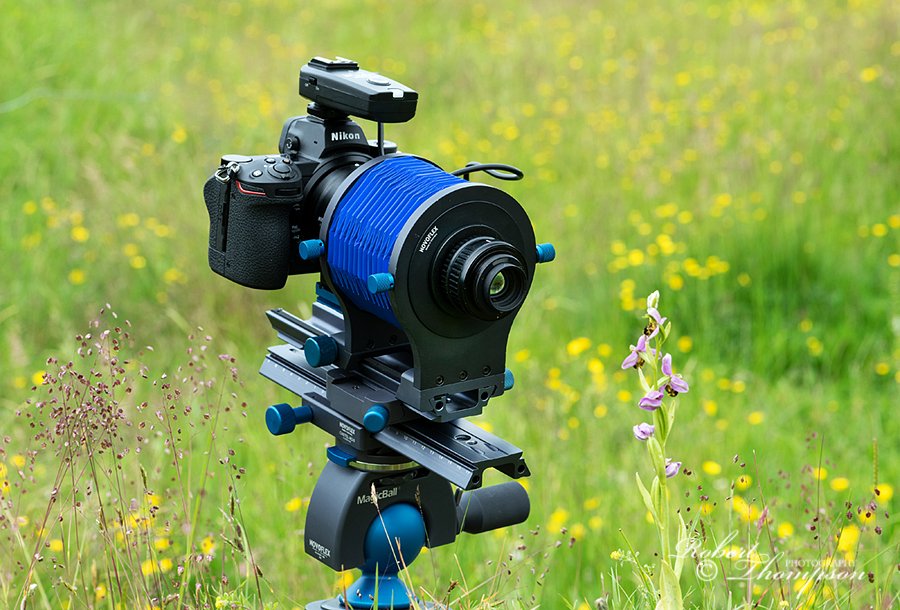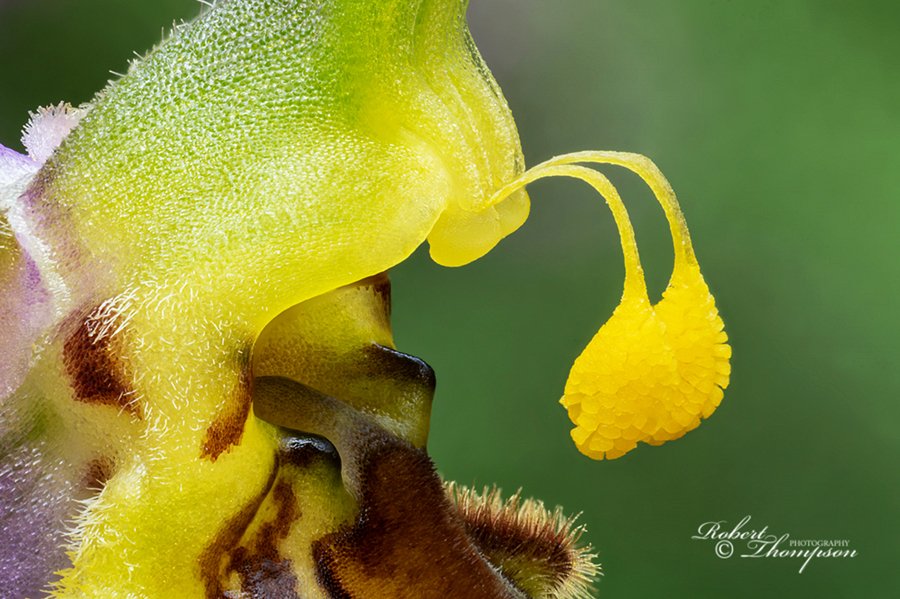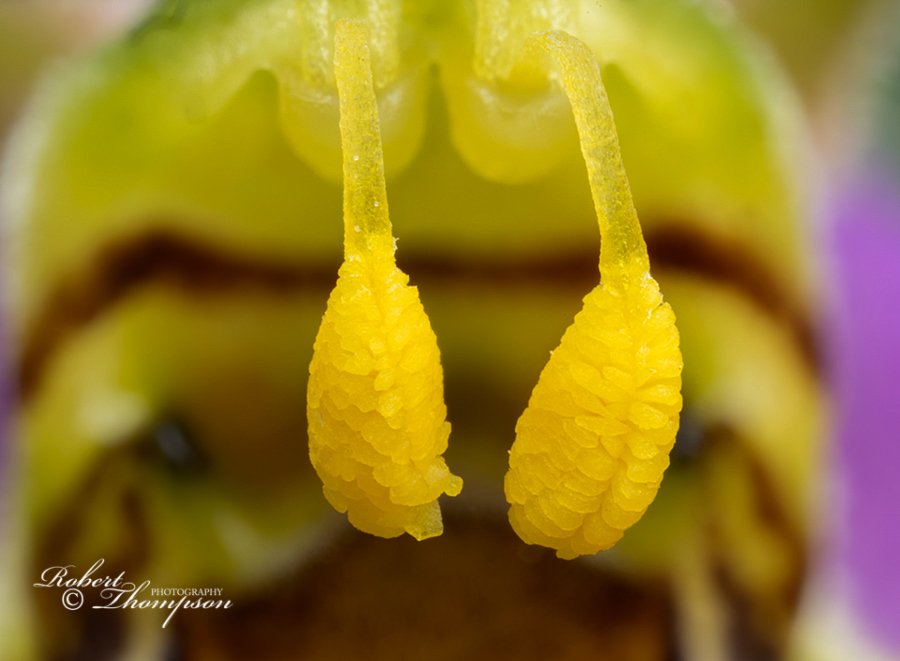BEE ORCHID OPHRYS APIFERA
The Bee Orchid is pretty unique among the British orchid flora. It is a highly attractive species and not easily mistaken for any other plant in the UK. The flower is striking and resembles the body of a bumblebee. It is a classic example of sexually deceptive pollination that has evolved over thousands of years. The Bee Orchid is widespread across Europe with many different species occurring across a range of different habitats.
In this series of images, I wanted to illustrate the highly delicate pollinia which are only a few mm long. Using the Novoflex BALPRO 1 bellows and the Nikon EL 50mm enlarging lens allow me to obtain magnifications greater than 1:1.

The setup. I have become used to working with bellows in the field again. I find I often reach for them in preference to using a macro with a converter. The results are extremely sharp with little in the way of artifacts and chromatic aberrations. Focus stacking is much more straightforward with bellows.
Photographic details: Nikon Z 7II, Novoflex BALPRO 1 bellows, Nikon EL 50mm enlarging lens. Supported on the Castel XQ focusing rail, MagicBall, and PRO75 tripod.

In this example, I photographed the pollinia in profile. Notice at this magnification the details in the pollinia themselves. I also use my custom stem stabiliser to help with additional stability (see my latest macro book for information on using and constructing one).
Photographic details: Nikon Z 7II, Novoflex BALPRO 1 bellows, Nikon EL 50mm enlarging lens. Supported on the Castel XQ focusing rail, MagicBall, and PRO75 tripod magnification 2:1.

In this image, I photographed the pollinia head on.
Photographic details: Nikon Z 7II, Novoflex BALPRO 1 bellows, Nikon EL 50mm enlarging lens. Supported on the Castel XQ focusing rail, MagicBall, and PRO75 tripod magnification 2:1.

